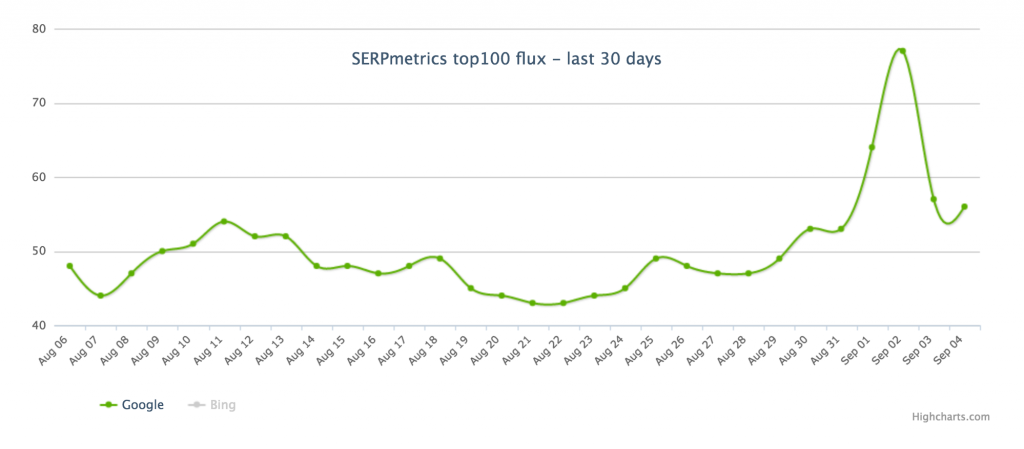Recent search results changes by Google have many people in the online world scratching their heads while trying to figure out exactly what is taking place. During this odd process of change, website owners watch helplessly as their site rankings plummet without warning, only to climb back up again in the blink of an eye. Although it is impossible to identify when Google will make a significant change to their search results actions, the following information may give you a better understanding of what is taking place.
Where It Begins
At the beginning of this month Google quietly began making changes to the search engine results page (SERP) monitoring tools. These tools give a website owner insight on where a site falls in terms of relevant keyword search inquires. It is not uncommon for these numbers to move up and down throughout the day. However, it is quite unusual to see major changes take place in a short period of time.
 Websites with a physical address in or near the heart of a city took the hardest hit with this round of Google changes. These companies saw their numbers fall off the charts, only to reappear again a short time later. Websites with physical addresses in other city locations saw a boost in their numbers. It would appear that by making this change, Google is no longer placing a significant amount of importance on the physical location of a website company.
Websites with a physical address in or near the heart of a city took the hardest hit with this round of Google changes. These companies saw their numbers fall off the charts, only to reappear again a short time later. Websites with physical addresses in other city locations saw a boost in their numbers. It would appear that by making this change, Google is no longer placing a significant amount of importance on the physical location of a website company.
The changes also bring about a disconnection between a website’s organic ranking and their local ranking statistics. In the past, having a website that produces strong organic search engine results page rankings also meant that same page would receive equally strong local search engine results page rankings. After this latest round of Google changes, the two no longer appear to have a positive working relationship.
The same can be said of companies that share office space and a physical address location. Before these changes, Google would recognize the difference between these two companies and represent each company accordingly. Now that is no longer the case. After these changes, two companies sharing a physical address now run the risk of having their local result filtered, which will result in only one company making an appearance in the local search result pages.
Why The Changes
As the middle of September arrives, Google once again made another round of changes to their search engine results page information. The new round of changes made an appearance just as website owners were starting to understand how to survive the last round of changes. When pressed for answers, Google took the ‘business as usual’ approach by stating the search result page statistical illustrations are nothing more than ‘normal fluctuations’ that occur each day. It becomes apparent to website owners and technology firms that Google is indeed engaging in a form of online experimentation as they try to work out the kinks of their latest software update.
The Arrival of Penguin 4
Much to the surprise of virtually no one in the technology industry, Google announces the arrival of their latest core algorithm update, which they are calling Penguin 4. The announcement serves as a representation of Google’s thought process behind all the changes website owners saw in September. Although at first glance, the new algorithm program does not appear to be much different than previous versions, there are a few slight changes that are important.
Penguin 4 will begin updating its records to reflect any website changes you make in a realt-time format. Previous Penguin programs would only make the changes each time the algorithm program underwent an update period. The new program will now view each page of your website as an independent item as opposed to using a ‘whole site’ presentation format.
The Next Step
Google is working to continually provide a quality match between user search queries and website page content information. As they continue making Penguin 4 available across the board for all website owners, you need to have a bit of patience while waiting your turn. While you are waiting, take the time to review all of your website content. Focus on your anchor text and making any changes that are necessary.
It also a good time to make improvements to your local map ranking as well. A quick review of your website will give you a good indication as to whether or not you are optimizing your site for local map citations. You also want to check whether or not your website continues to be mobile friendly. Search engines frown upon using popups on mobile sites so make sure you disable these features from activating on your mobile website appearance.
Google continually makes changes on a regular basis. It is impossible to predict when the next one will take place. All you can do is keep your website updated and continue on with business as usual. When the changes come, you will be ready to take action.





